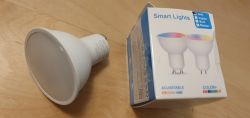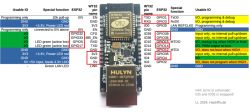I am making a thermometer - the system wakes up every 3 minutes, reads the temperature from the sensor and sends the data via WiFi to the database and then performs deep sleep for 3 minutes. The whole thing is supposed to be energy-saving, because it will be battery-powered.
I omit the fact that everywhere I read the NodeMCU specification it was written that we power the system through the pins with 3.3V, which is not true - the thermometer went crazy until I connected the whole thing to 5V and the problems disappeared.
Main question: I'm powering it from a 3.7V 18650 battery. So I need to raise the voltage to 5V. Will the voltage converter take a lot of current when the NodeMCU is in deep sleep? Or can it be done with a zener diode somehow? The system, when it sends data via WiFi, consumes about 250mA. What will be the best solution? I prefer to stay with one battery because of the size - there is no space for a second battery.
I omit the fact that everywhere I read the NodeMCU specification it was written that we power the system through the pins with 3.3V, which is not true - the thermometer went crazy until I connected the whole thing to 5V and the problems disappeared.
Main question: I'm powering it from a 3.7V 18650 battery. So I need to raise the voltage to 5V. Will the voltage converter take a lot of current when the NodeMCU is in deep sleep? Or can it be done with a zener diode somehow? The system, when it sends data via WiFi, consumes about 250mA. What will be the best solution? I prefer to stay with one battery because of the size - there is no space for a second battery.







